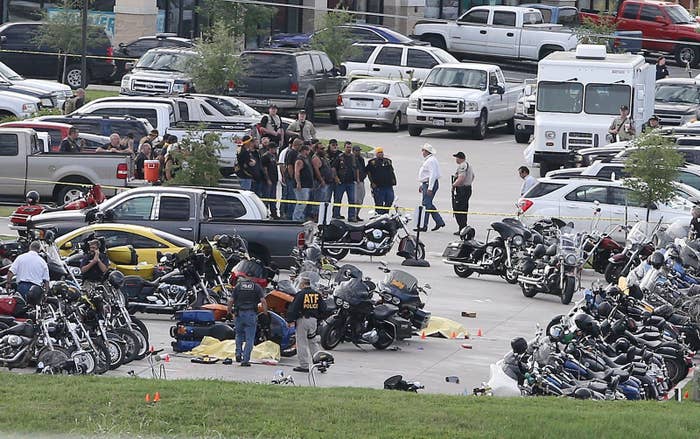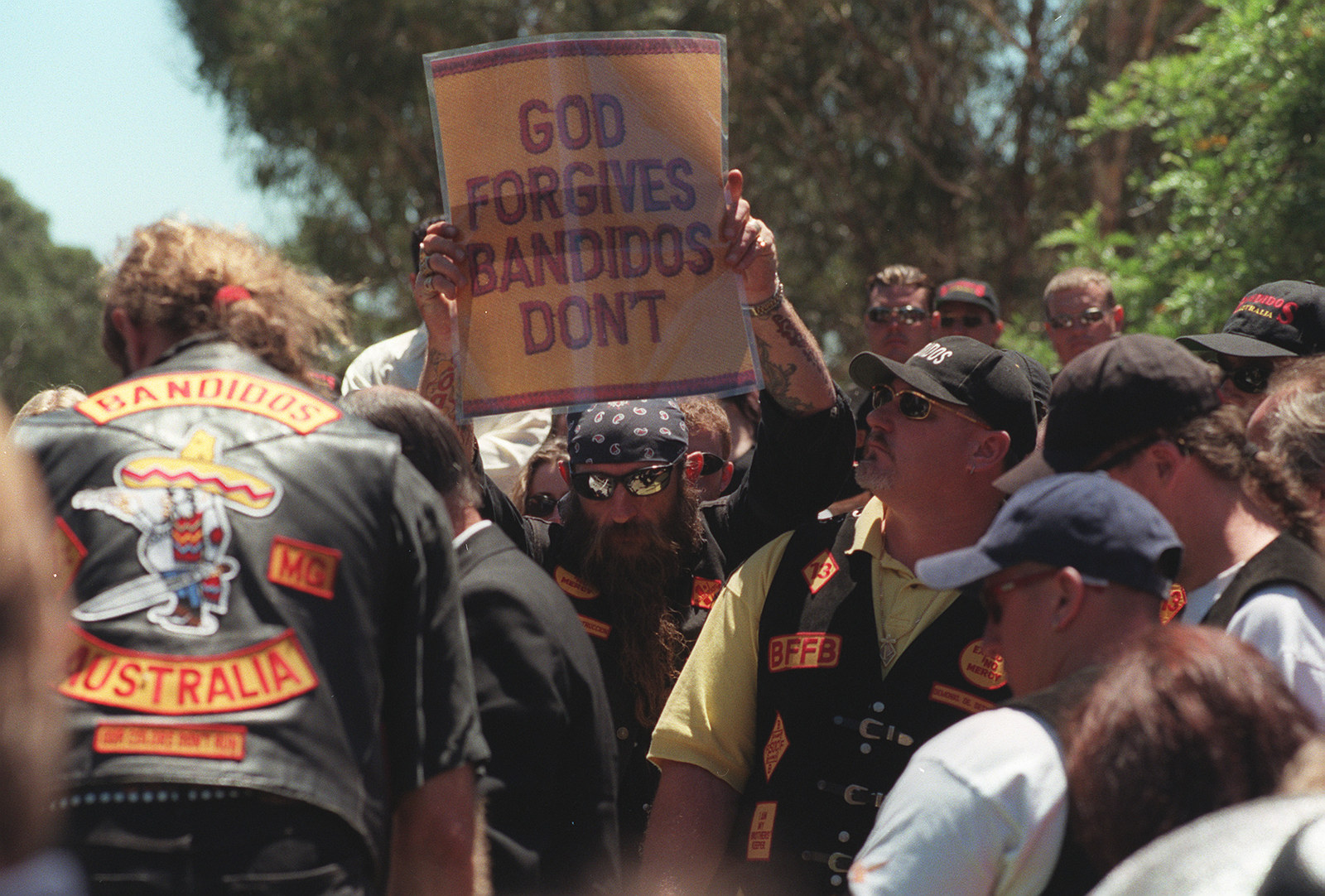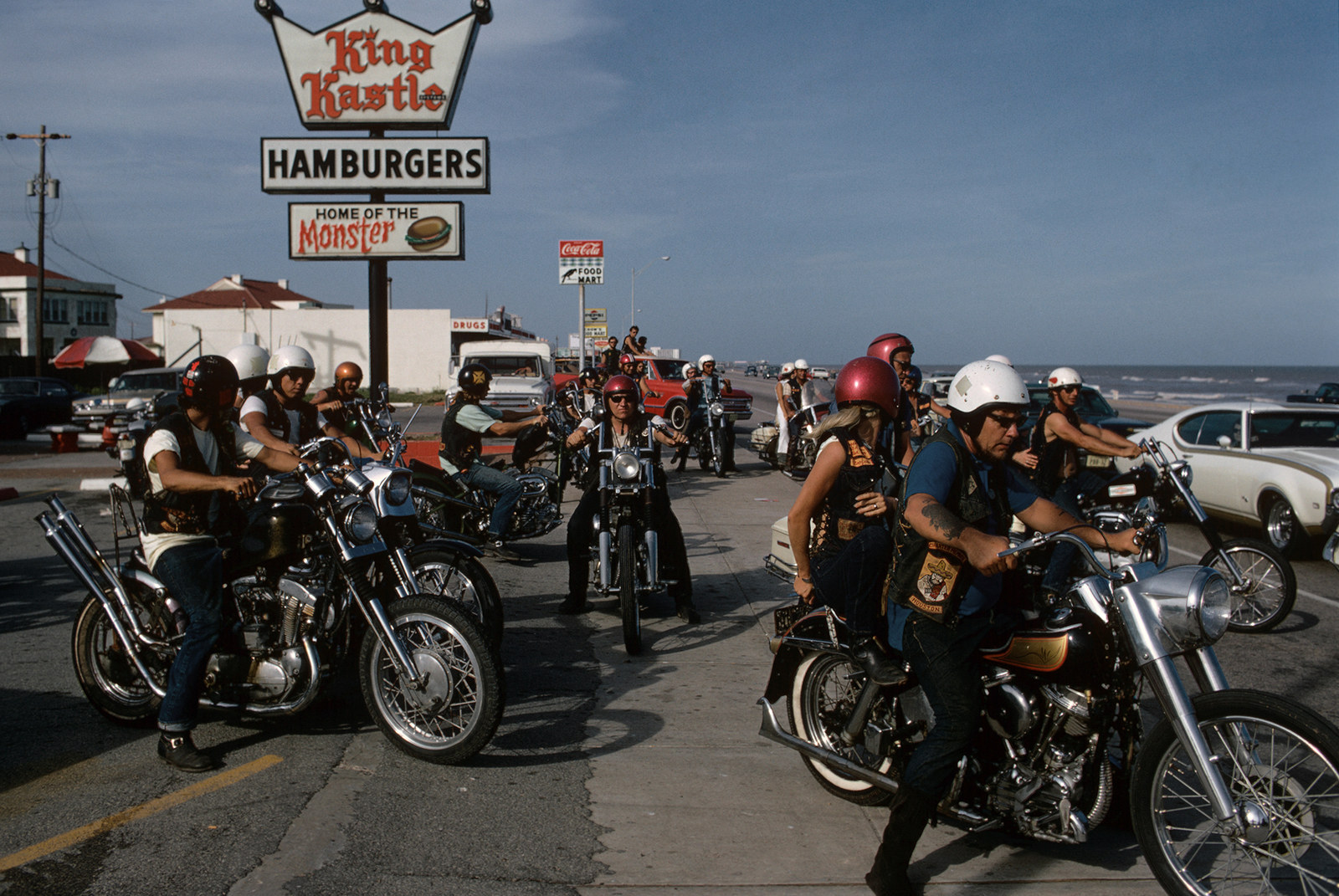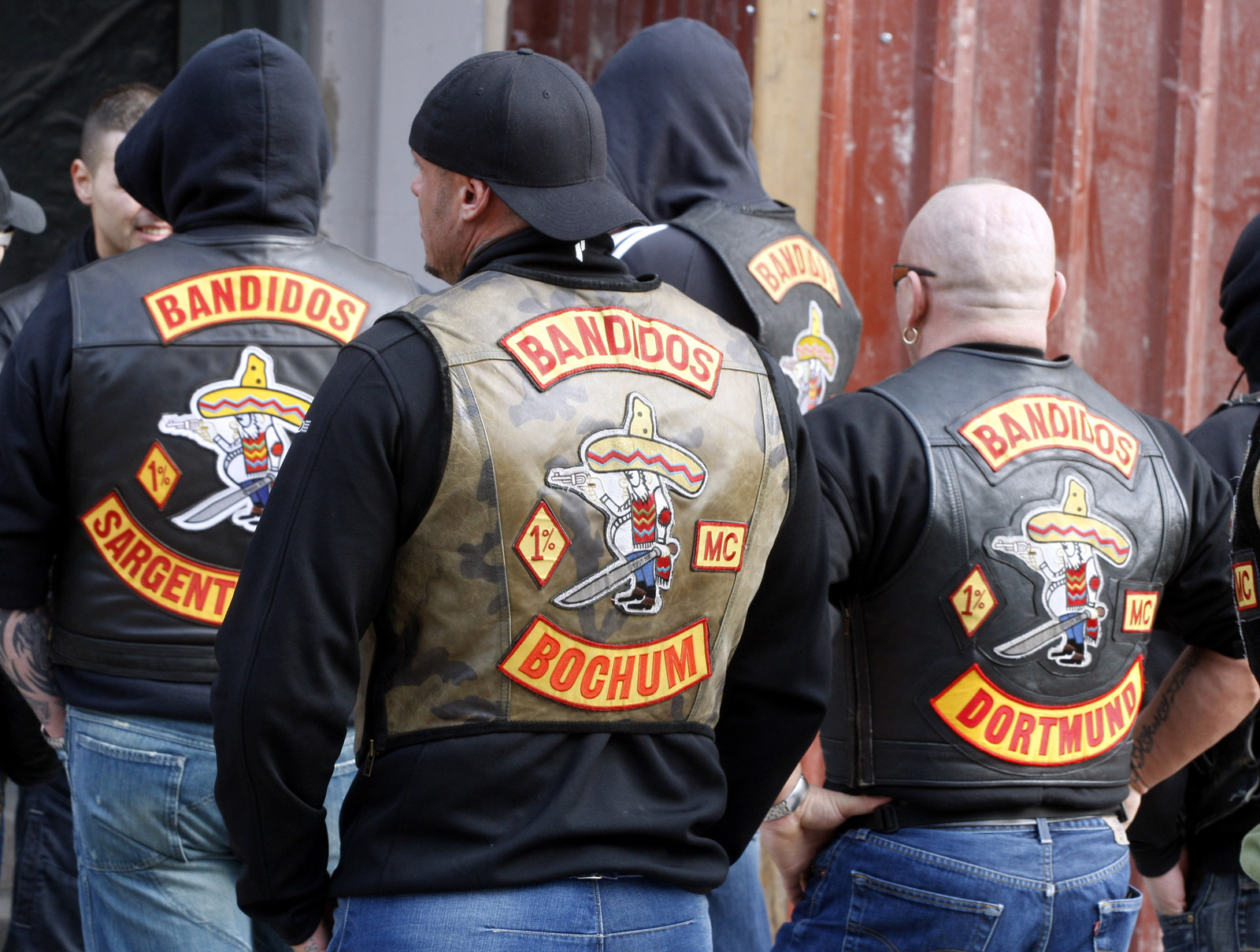
As investigators on Monday continued to process the bloody crime scene in a Waco, Texas, restaurant parking lot, police pointed to the deadly biker shoot-out as evidence that outlaw motorcycle gangs continue to pose a major criminal threat across the United States.
Nine biker gang members were killed on Sunday, and at least 18 others injured, when a fight between rivals spilled out from the Twin Peaks restaurant and into the parking lot, according to Waco police, who described it as among the worst gunfights the city has ever seen.
Fists gave way to chains, knives, and clubs, before guns were drawn, shots were fired, and blood was spilled. In the aftermath of the chaotic scenes, with some 170 alleged gang members now facing charges of engaging in organized crime, authorities are warning the problem of motorcycle gangs stretches far beyond a Texas parking lot.

"This is Anytown, USA," Waco police spokesman Sgt. Patrick Swanton told reporters Monday. "This can happen in any state across our United States. There is a criminal element across our world, and unfortunately for us they chose to be here on a Sunday in Waco, Texas."
Swanton has refused to name the exact gangs involved in the shoot-out, citing a desire not to provide them with "publicity," but did say members from five groups were involved in the fight. Photos from the scene showed men wearing jackets featuring the insignia of three main groups: the Bandidos, the Cossacks, and the Scimitars.

The Bandidos gang is the oldest and most infamous of these three groups. Founded in Texas in 1966 by a Vietnam veteran, the Bandidos now boast up to 2,500 members around the world and a presence in 16 U.S. states.
The group is one of the "Big Five" outlaw motorcycle gangs, a list of criminal notoriety first developed by police, according to Bill Hayes, author of The One Percenter Encyclopedia: The World of Outlaw Motorcycle Clubs. "Their 'leader board' was based on a lot of factors," Hayes writes in his book. "Club size, international influence, law enforcement’s carefully analyzed potential for mayhem and public carnage, longevity, and probably several other types of crime-criteria that are known only to those with badges."

For Americans more familiar with middle-aged male professionals buying Harley Davidsons for a hobby, biker gangs remain a curious remnant of the past — a bygone era when Hunter S. Thompson once rode along with the Hells Angels, whom the gonzo godfather described as "secure in their reputation as the rottenest motorcycle gang in the whole history of Christendom." But biker gangs continue to occupy an important role in the American criminal landscape, posing a "serious national domestic threat," according to the Department of Justice.
"[Outlaw motorcycle gangs] are highly structured criminal organizations whose members engage in criminal activities such as violent crime, weapons trafficking, and drug trafficking," the DOJ has said, warning that more than 300 such groups exist across the country. Federal officials believe transnational gangs, like the Bandidos, are able to coordinate sophisticated international drug smuggling operations involving major drug trafficking groups. The DOJ says the Bandidos produce methamphetamine, in addition to transporting and distributing marijuana and cocaine, and constitute a "growing criminal threat to the U.S."
Jorge Gil-Blanco, a reserve deputy assigned to the San Mateo County Sheriff's Office's gang intelligence unit in California, has investigated biker gangs, often undercover, since 1990. "They're criminal organizations," Gil-Blanco said of the gangs in an interview with BuzzFeed News. "They try to enhance their image by doing blood drives or so-called charity events, but even at these events we end up having shootings."

A 2014 report from the Texas Department of Public Safety warned that the Bandidos "seek to turn public sentiment in their favor by organizing frequent charity runs." The department wrote that it considers the Bandidos to be the most dangerous biker gang in the state, ranking them as a "tier two" gang that is "responsible for a disproportionate amount of crime."
Perhaps the most shocking detail of the Waco shoot-out was the fact that the gang members were aware of the heavy uniformed police presence already outside the restaurant. Such brazen behavior runs counter to what Texas officials described as a tendency among Bandidos members to operate "covertly" and avoid "high-profile activities such as drive-by shootings that many street gangs tend to commit."
Gil-Blanco said the police and media tend to focus mostly on black or Hispanic street gangs because of their high profile and regular criminal activity. “Biker gangs are a lot more sophisticated,” he warned. “The public ends up buying into the message that they’re just guys that ride bikes, when it’s far from that.”
"Americans need to understand who these outlaw motorcycle gangs really are," he said. "They're criminal organizations and violent ones at that."

